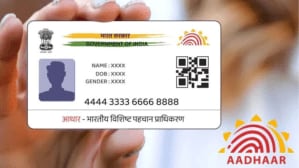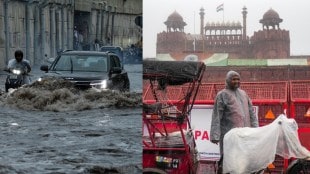Lord Ganesha
On Diwali, Lord Ganesha and goddess Lakshmi are worshipped together. It is believed that goddess Lakshmi had adopted one of goddess Parvati’s sons as she wanted to experience motherhood and had promised to take care of him. She had said that he would always be worshipped with her. Hence, Ganesha and Lakshmi worship on Diwali signifies good fortune, wealth, prosperity and abundance. It is said that to seek goddess Lakshmi’s blessings, one must first evoke Lord Ganesha.
Goddess Lakshmi
Lakshmi puja is one of the most commonly performed pujas during Diwali in India. Goddess Lakshmi signifies wealth and prosperity, hence people pray to goddess Lakshmi to welcome her to their house and to be blessed with abundance throughout the year. In the eastern part of the country, many keep their doors open to welcome the goddess. Lakshmi Puja is also the main part of the festive celebrations on Diwali. In Assam, Odisha and Bengal, Lakshmi Puja is held five days after Dussehra or Vijaya Dashami.
Lord Krishna
Every myth and legend related to Diwali narrates the story of victory of good over evil. One more such story is of Lord Krishna who is also worshipped on Diwali. It is said that on this day, Lord Krishna defeated the demon Narakasura who ruled Pragjyotishpur (present day Assam). The people of his kingdom lived in fear. In order to free them from fear, Lord Krishna defeated him and declared that the day would be celebrated.
This day is also called Naraka chaturdashi or chhoti Diwali and is celebrated a day prior to Diwali.
Cows
In Hinduism, cows are worshipped during Diwali on Govatsa Dwadashi. This celebration especially takes place in Maharashtra, where it is known as Vasu Baras, in Gujarat as Vagh Baras, and so on. It is a thanksgiving festival wherein cows are thanked for providing nourishment to humankind. In some states, it is also called Vagh, meaning clearing one’s debts and it is the day when businessmen clear their accounts. It is also called Nandini Vrat and cows and calves are fed wheat products.
Guru Hargobind
For Sikhs, Diwali often coincides with their festival — Bandi Chor Diwas. On this day, it is believed that the sixth Guru of Sikhs, Guru Hargobind ji released 52 kings from Gwalior Fort. They had been captured by by Mughal Emperor Jahangir for several months. Prior to this, Guru Hargobind Sahib’s father Guru Arjan Dev was arrested and asked to convert to Islam by Jahangir. When he refused, he was executed. But this became a defining moment in Sikhism. This also led Guru Hargobind to succeed his father as the next and the sixth Guru. It is believed that when the news of Guru Hargobind emphasising the military dimension of Sikhs to avenge his father reached Jahangir, he got him arrested.
Also Read: Diwali and diamonds: Festive and wedding season fueling the diamond jewellery market
Tulasi Vivaha
The festival is about the ceremonial wedding of goddess Tulasi. In this, Tulasi’s wedding with an Amla branch, which is the personification of Vishnu, is held. It signifies the end of monsoon and the beginning of the wedding season. The festival is celebrated across Gujarat, Maharashtra, Bihar, Andhra Pradesh.
Goddess Kali
Kali puja is popular in West Bengal, parts of Bihar, Tripura, Odisha, Assam and in neighbouring Bangladesh. According to Hindu mythology, goddess Kali had appeared and killed demons Shumbh and Nishumbh who were creating a ruckus in heaven and planned to capture goddess Durga. When the angered goddess Kali killed the demons, she lost control over herself and in a fit of rage began killing humans as well. This led Lord Shiva to place himself in front of the goddess. Hence, she stepped on his chest and her tongue came out in embarrassment. This is why the goddess is pictured with a foot
over Lord Shiva’s chest with her tongue out.
Mahavira
For Jains, Diwali marks the anniversary of Mahavira’s nirvana. It also marks the end of the year for Jains. It is said that Mahavira attained moksha on this day at Pawapuri in Nalanda district of Bihar. Mahavira’s chief disciple Ganadhara Gautam Swami also attained moksha on this day, hence making it their most important festival. The Jain new year starts with Pratipada following this day on Diwali and their calendar is called Vira Nirvana Samvat.









